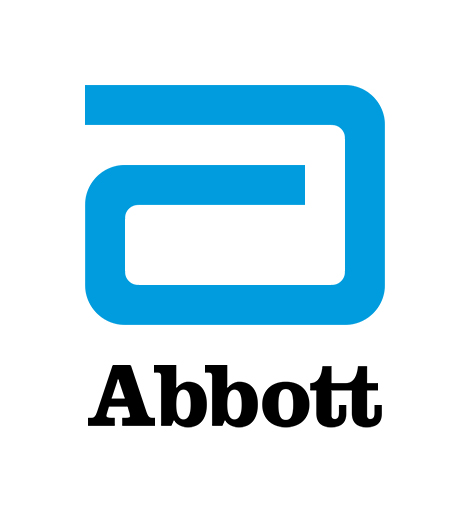Bringing Breakthrough Tech Where it's Needed Most
Around the world, COVID-19 has made many a bad situation worse. In doing so, it also showed the world where improvements in care can make the greatest difference.
For underserved and low-income communities facing the pandemic and a corresponding rate of diabetes and pre-diabetes, that's exactly the kind of bad-to-worse scenario that is an opportunity to make a real change.
In a conversation hosted by the Washington Post Live as part the outlet's "Diabetes in America" panel discussion, Jared Watkin, senior vice president of Diabetes Care at Abbott, and Tracey Brown, chief executive officer of the American Diabetes Association (ADA), outline the challenges and how their organizations are partnering to tackle them.
"Forty percent of the people who've died from COVID-19 have been people living with diabetes," Brown said. "Fifty percent of low-income Americans have lost some or all of their income. When that happens, it makes it very difficult for you to manage your diabetes and condition. One out of 5 people during this COVID-19 time have actually had to choose between buying food and their diabetes medicines and supplies. And 43 percent of people living with diabetes have delayed routine care."
No one should have to choose between food and medicine. Relief from those stark choices is behind Abbott's $5 million promise over three years to bring improved diabetes care to those communities. Abbott — a leader in diabetes care — was the first anchor sponsor of the American Diabetes Association's Health Equity Now initiative to address health disparities for people with diabetes.
That commitment isn't limited to supporting the ADA's initiative. From the first day of the R&D process, we're designing our products to be accessible and affordable to those who need them most with the goal to help billions more around the world by 2030.
"Like the ADA, we believe access to breakthrough technologies should not be out of the reach of people who can benefit from it the most. Which is why we took a unique approach from the start with FreeStyle Libre and designed it to be both simple to use but also — critically — affordable," Watkin said.
While COVID-19 has made a bad situation worse for so many, we're working to make the greatest difference for billions around the globe. Watkin's and Brown's full conversation in the video above make that clear.
IMPORTANT SAFETY INFORMATION
FREESTYLE LIBRE 2 SYSTEM
FREESTYLE LIBRE 14 DAY SYSTEM
Indications and Important Safety Information
FreeStyle Libre 14 day system: The FreeStyle Libre 14 day Flash Glucose Monitoring System is a continuous glucose monitoring (CGM) device indicated for the management of diabetes in persons age 18 and older. It is designed to replace blood glucose testing for diabetes treatment decisions. The System detects trends and tracks patterns aiding in the detection of episodes of hyperglycemia and hypoglycemia, facilitating both acute and long-term therapy adjustments. Interpretation of the System readings should be based on the glucose trends and several sequential readings over time. The System is intended for single patient use and requires a prescription.
CONTRAINDICATIONS: Remove the sensor before MRI, CT scan, X-ray, or diathermy treatment.
WARNINGS/LIMITATIONS: Do not ignore symptoms that may be due to low or high blood glucose, hypoglycemic unawareness, or dehydration. Check sensor glucose readings with a blood glucose meter when Check Blood Glucose symbol appears, when symptoms do not match system readings, or when readings are suspected to be inaccurate. The FreeStyle Libre 14 day system does not have alarms unless the sensor is scanned, and the system contains small parts that may be dangerous if swallowed. The FreeStyle Libre 14 day system is not approved for pregnant women, persons on dialysis, or critically-ill population. Sensor placement is not approved for sites other than the back of the arm and standard precautions for transmission of blood borne pathogens should be taken. The built-in blood glucose meter is not for use on dehydrated, hypotensive, in shock, hyperglycemic-hyperosmolar state, with or without ketosis, neonates, critically-ill patients, or for diagnosis or screening of diabetes. When using FreeStyle LibreLink app, access to a blood glucose monitoring system is required as the app does not provide one. Review all product information before use or contact Abbott Toll Free (855-632-8658) (or visit www.freestylelibre.us) for detailed indications for use and safety information. For full indications for use and safety information, see more here.
FREESTYLE LIBRE 2 SYSTEM
Indications and Important Safety Information
FreeStyle Libre 2 system: The FreeStyle Libre 2 Flash Glucose Monitoring System is a continuous glucose monitoring (CGM) device with real time alarms capability indicated for the management of diabetes in persons age 4 and older.*
WARNINGS/LIMITATIONS*: The System must not be used with automated insulin dosing (AID) systems, including closed loop and insulin suspend systems. Remove the sensor before MRI, CT scan, X-ray, or diathermy treatment. Do not take high doses of vitamin C (more than 500 mg per day), as this may falsely raise your Sensor readings. Failure to use the System according to the instructions for use may result in missing a severe low blood glucose or high blood glucose event and/or making a treatment decision that may result in injury. If glucose alarms and readings from the System do not match symptoms or expectations, use a fingerstick blood glucose value to make diabetes treatment decisions. Seek medical attention when appropriate and contact Abbott Toll Free (855-632-8658) or visit * www.freestylelibre.us for detailed indications for use and safety information.
*Please refer to www.freestylelibre.us for the indications and important safety information.

